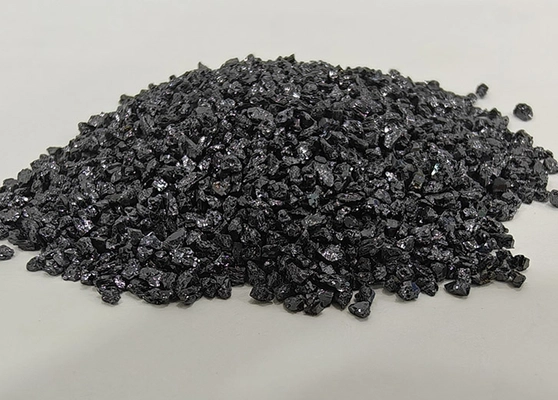Quick Answer: Silicon is more abundant than carbon in the Earth’s crust, while carbon is more abundant in the universe. Silicon ranks as the second most abundant element in the Earth’s crust after oxygen, forming silicate minerals and silicon dioxide (SiO₂). Carbon, though essential for life, occurs mainly in compounds like carbonates and organic matter. Both elements combine in industry to form silicon carbide (SiC), a key abrasive and refractory material.
Table of Contents
- 1. Introduction
- 2. Abundance Comparison: Carbon vs Silicon
- 3. In Earth vs In the Universe
- 4. Role in Industry: Formation of Silicon Carbide
- 5. FAQ
1. Introduction
Both carbon (C) and silicon (Si) are fundamental elements that define the structure of modern materials. Carbon is the building block of all organic compounds, while silicon dominates the mineral world. Understanding their abundance reveals how these two elements form the basis for advanced ceramics and abrasives like silicon carbide (SiC).
2. Abundance Comparison: Carbon vs Silicon
In the Earth’s crust, silicon is vastly more abundant than carbon. The following table compares their relative abundance in both the crust and the universe:
| Environment | Silicon (Si) | Carbon (C) |
|---|---|---|
| Earth’s crust | ~27.7% by weight (second after oxygen) | ~0.02% by weight |
| Universe (by mass) | ~0.07% | ~0.46% |
| Core industrial role | Forms silicates, quartz (SiO₂), silicon carbide (SiC) | Exists in graphite, coke, carbon black, organic compounds |
3. In Earth vs In the Universe
On Earth, silicon dominates because it readily bonds with oxygen to form silicon dioxide (SiO₂) and silicate minerals. These make up nearly 90% of the crust. Carbon, on the other hand, is mostly found in carbonate rocks (like limestone) and in living organisms, accounting for a much smaller portion of total crust mass.
In contrast, in the **cosmic scale**, carbon is more abundant because it forms easily in stellar fusion reactions. That’s why carbon-based compounds dominate in space chemistry and organic molecules across the universe.
4. Role in Industry: Formation of Silicon Carbide
In industrial applications, both elements meet in one remarkable compound — Silicon Carbide (SiC). SiC is produced by heating a mixture of high-purity silicon dioxide (SiO₂) and carbon materials (such as petroleum coke) in an electric resistance furnace:
SiO₂ + 3C → SiC + 2CO↑
This reaction forms one of the hardest and most heat-resistant materials known. SiC serves as a key abrasive in grinding, blasting, and polishing, and as a refractory material in furnaces. You can learn more on our detailed guide: Silicon Carbide Abrasive Media.
5. FAQ
Which element is more abundant — carbon or silicon?
Silicon is more abundant in the Earth’s crust, while carbon is more abundant in the universe overall.
Why is silicon more common on Earth?
Because silicon easily combines with oxygen to form silicates and quartz, which are stable and make up most of the crust’s minerals.
How does carbon relate to silicon in industry?
Carbon reacts with silicon dioxide (SiO₂) to form silicon carbide (SiC), a material known for extreme hardness and thermal stability.
What are the main uses of silicon and carbon?
Silicon is used in semiconductors, ceramics, and abrasives; carbon is used in steelmaking, graphite products, and as a reducing agent for SiC production.
